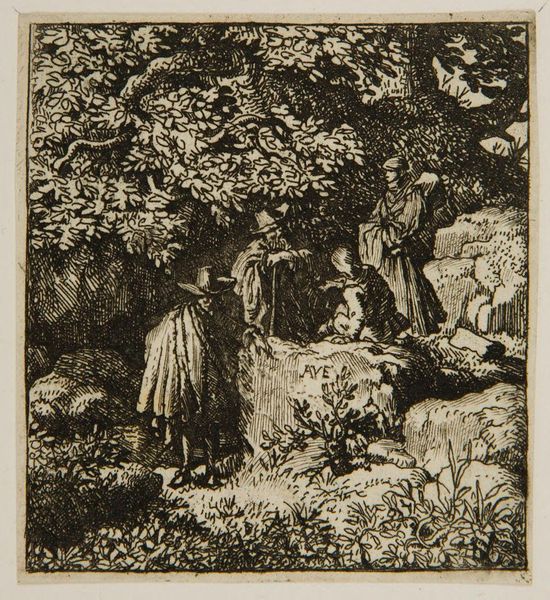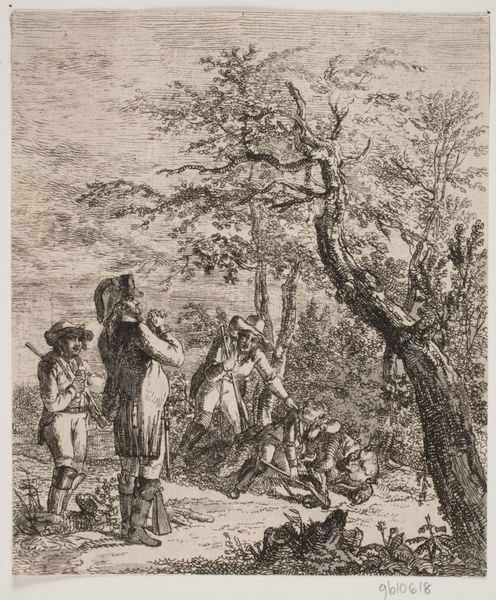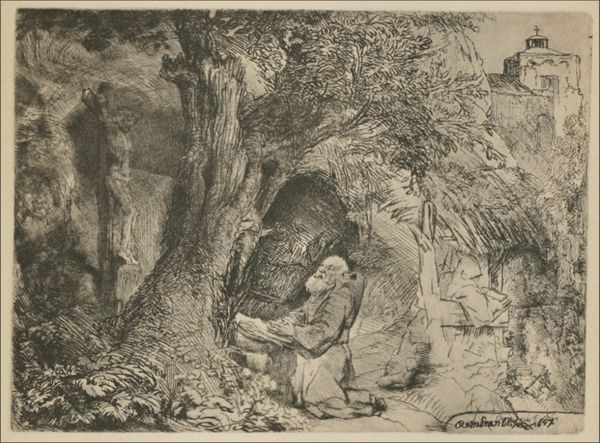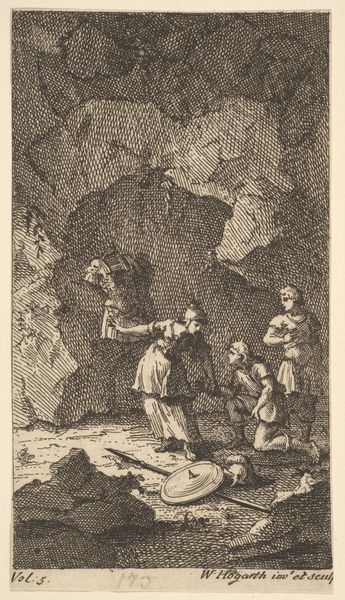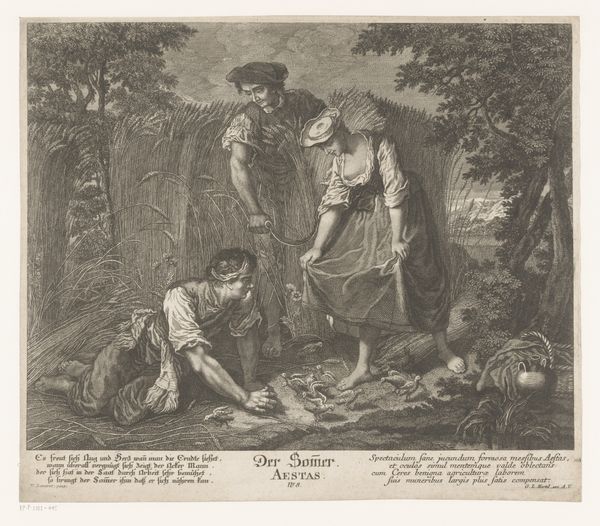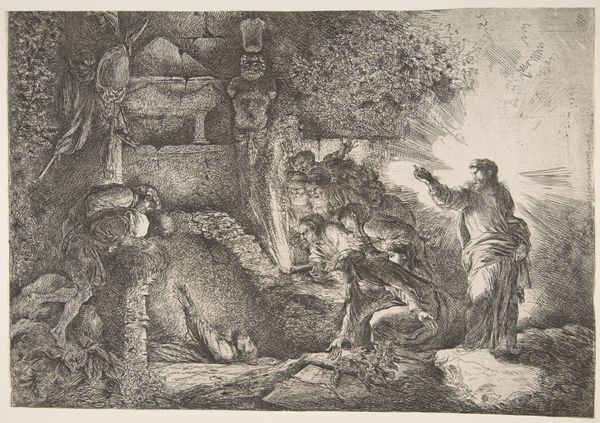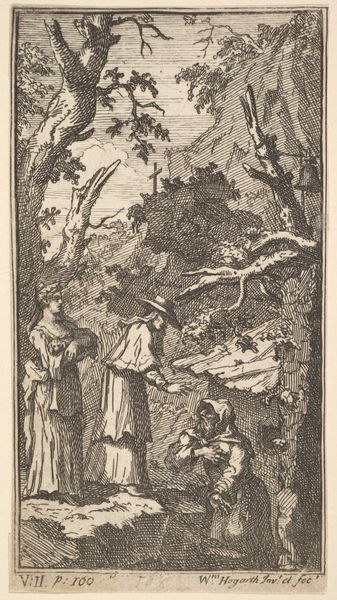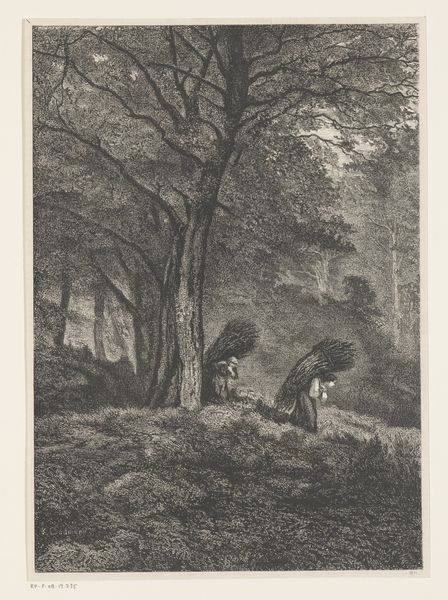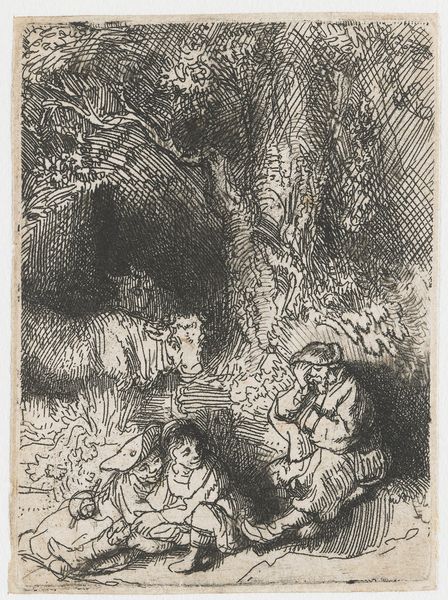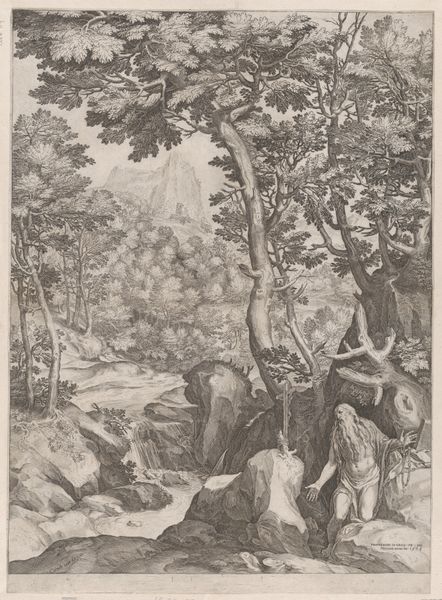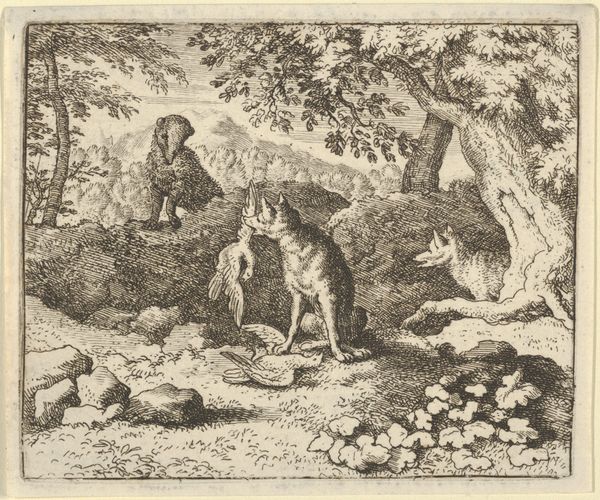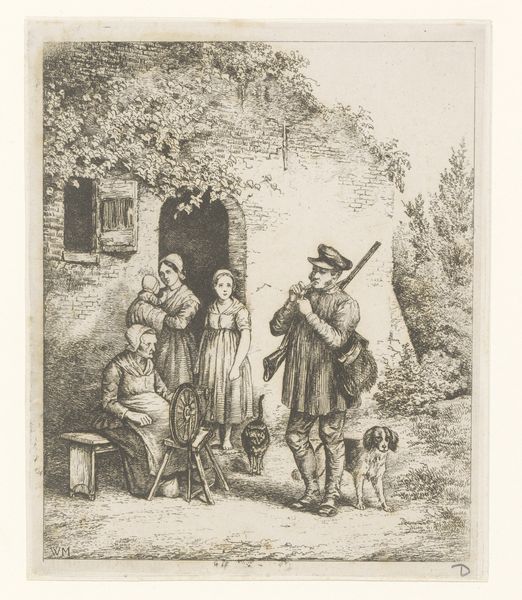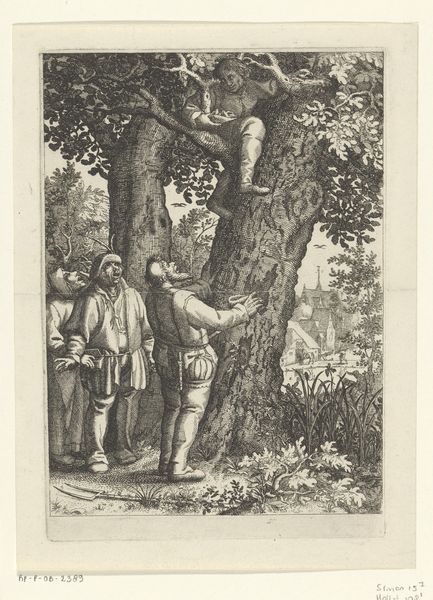
drawing, print, pen
#
tree
#
drawing
#
ink drawing
#
pen drawing
# print
#
pen illustration
#
pen sketch
#
landscape
#
figuration
#
personal sketchbook
#
ink drawing experimentation
#
pen-ink sketch
#
men
#
pen work
#
sketchbook drawing
#
pen
#
northern-renaissance
#
doodle art
Dimensions: Sheet: 2 15/16 × 2 11/16 in. (7.5 × 6.9 cm)
Copyright: Public Domain
Curator: Look at the density of lines; it almost vibrates with a frantic energy. Editor: Indeed. Before us is "Four Figures under a Tree," a pen and ink drawing by Allart van Everdingen. This piece resides in the Metropolitan Museum of Art, created sometime between 1621 and 1675. Curator: The tree itself feels like a protective canopy, but also oppressive with its gnarled branches and almost suffocating amount of detail. The figures almost seem dwarfed beneath its weight. I’m seeing an evocation of nature’s indifference to human affairs. Editor: The artist really seemed to revel in the medium; the starkness of the ink on paper allows the frantic energy you noticed. There’s little blending or soft focus to cushion the effect; a pure visual record of his process. Do you see a social hierarchy within this little ink world? The way the standing figures look down on the seated one, almost literally perched atop the rocks? Curator: Absolutely. There is this distinct positioning that could certainly imply social stratification. The man with the staff seems the most assertive in posture and gaze, commanding our attention along with what looks like a monk, while the seated figure appears to be someone of a lesser status. The very rock formation then becomes a stage for subtle gestures of power and social order. It’s as if Everdingen captures a frozen moment in a hierarchical tableau. Editor: Considering the likely use of quill pens in his time and place, one wonders about the conditions he made art under; perhaps daylight illuminating his labor. And this work, being on paper, meant it was highly transportable, likely shown around to others, collected in albums, even pinned up in studios and studies. Curator: Fascinating to think about the life this artwork may have had, passed around, inspiring dialogue and discussion across time. It makes you wonder how deeply symbols resonated with people then, or what kind of status might they have inferred about the artist from something that we read today as just pen and ink sketches. Editor: The life of this object, how people made meaning of its materiality – this artwork is less a looking glass and more a conversation, across centuries. Curator: I like that—a conversation! Editor: Me too!
Comments
No comments
Be the first to comment and join the conversation on the ultimate creative platform.
